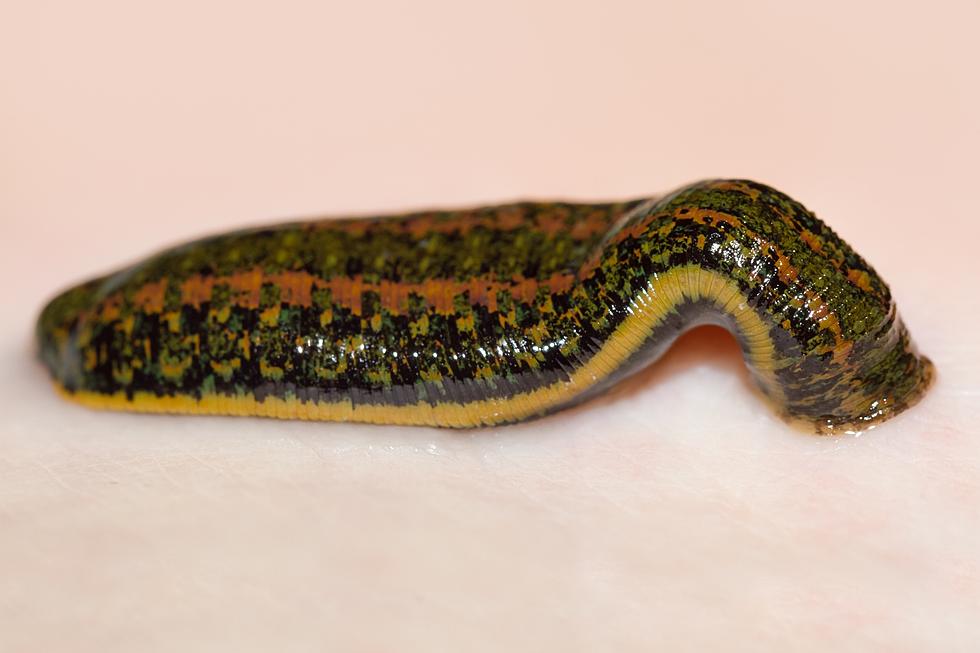
Massachusetts Has Bloodsucking Freshwater Leeches With Teeth
The National Library of Medicine says there are "more than 700 described species of leeches" in "terrestrial and aquatic habitats, including freshwater, estuarian, and marine ecosystems."
According to Maine.gov, "Leeches are typically found in shallow, protected waters, concealed among aquatic plants or under stones, logs and other debris."
Dartmouth's Lloyd Center for the Environment (LCE) says leeches "have five sets of eyes" and are "not the most popular or favorable organism."
According to LCE, "The freshwater leech, Macrobdella decora, lives in slow-moving freshwater and feeds on the blood of its prey, fish, frogs, turtles, and some mammals, with its front and rear suckers."
The Center says, "The leech's mouth sucker is able to break through the skin of the host and then releases an enzyme that numbs the affected area and then causes the blood to flow freely."

Mass.gov says the American Medicinal leech is a "common and widespread leech." The site says, "The adult American Medicinal Leech has 65 teeth on each side of its toothed jaws and can reach more than nine inches in length." The species is common in coastal Massachusetts.
The New England Medicinal Leech is one of the rarest leech species in North America, though it has been found in Massachusetts. This species is among the largest in New England at more than five inches.
The New England Medicinal Leech also has five sets of eyes but only 38 to 48 teeth on each of its toothed jaws. The species is not endangered but listed as a "special concern" in Massachusetts.
Only four New England Medicinal Leeches have been collected in Massachusetts. One specimen remains. It is on display at Harvard University's Museum of Natural History.
Leeches have been used medicinally for over 2,000 years, more recently to assist in blood clots and reconstructive surgery.
If bitten by a leech, wash the area with soap and water, apply a cold pack, and take a simple analgesic to relieve pain or swelling. If it becomes infected, see a doctor.
LOOK: 11 tick-borne illnesses and what to watch out for during your outdoor adventures
Gallery Credit: Martha Sandoval
LOOK: Here are the states where you are most likely to hit an animal
Gallery Credit: Dom DiFurio & Jacob Osborn
More From WFHN-FM/FUN 107









